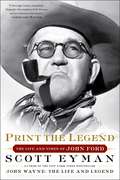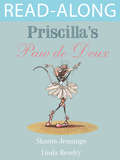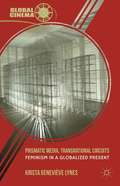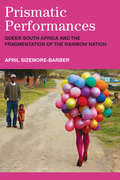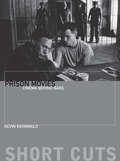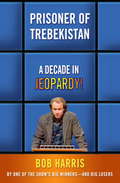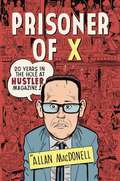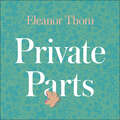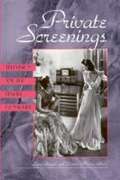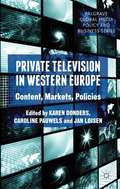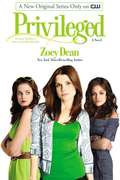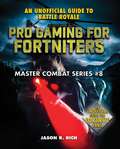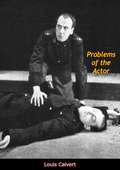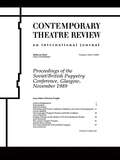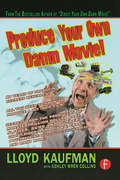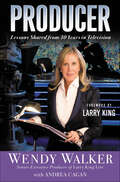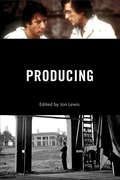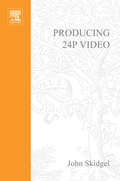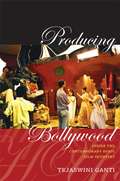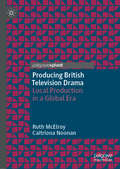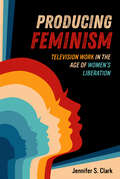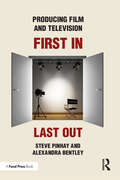- Table View
- List View
Princess of the Midnight Ball
by Jessica Day GeorgeA tale of twelve princesses doomed to dance until dawn… Galen is a young soldier returning from war; Rose is one of twelve princesses condemned to dance each night for the King Under Stone. Together Galen and Rose will search for a way to break the curse that forces the princesses to dance at the midnight balls. All they need is one invisibility cloak, a black wool chain knit with enchanted silver needles, and that most critical ingredient of all--true love--to conquer their foes in the dark halls below. But malevolent forces are working against them above ground as well, and as cruel as the King Under Stone has seemed, his wrath is mere irritation compared to the evil that awaits Galen and Rose in the brighter world above. Captivating from start to finish, Jessica Day George’s take on the Grimms’ taleThe Twelve Dancing Princesses demonstrates yet again her mastery at spinning something entirely fresh out of a story you thought you knew.
Principal Matters (updated And Expanded): The Motivation, Action, Courage And Teamwork Needed For School Leaders
by William ParkerSchool leadership can often be a lonely calling. But it doesn't have to be that way. William D. Parker offers insights from over twenty years of experience as an educator, and over ten years as a school administrator. You are invited to this one-on-one conversation to learn how to better understand your purpose, lead others, influence change, and successfully manage the challenges of school leadership. Whether you are an aspiring principal or leading your own building or district, you will find Principal Matters both inspiring and instructive. Read ahead for insight into how to lead with courage, action, motivation, and teamwork! Here's some feedback from some others who recommend the book: “Will is a great storyteller, and his use of these connections makes this book easy to read but also memorable. His focus on ‘purpose’—going beyond what you do in school—is something that all leaders should really consider if they are going to make a difference in both their professional and personal lives.” –George Couros, Principal, founder of ConnectedPrincipals.com, and an Innovative Teaching, Learning and Leadership consultant “Will generously shares experiences from his personal and professional life to remind principals of the big picture as well as the small details that are essential to the success of our school communities…Being a school leader can be lonely work, as the role of principal is only truly understood by those who have served in the position. Mr. Parker has utilized his time occupying the principal’s office to develop practical yet inspiring tips for administrators. I’m excited to politely steal many of his great ideas with my own students and staff this school year!” -Rachel Skerritt, Principal of Eastern Senior High School, a D.C. Public School. 2013 Principal Ambassador Fellow for the U.S. Department of Education “Will writes with passion, conviction and insight. This book will equip you with the tools you’ll need to face the frustrations you’re sure to encounter as an educator, while enabling to you find renewed purpose and meaning as you influence your students to be the best they can be.” -Daniel Wong, author of The Happy Student “This book explains the why of school leadership, not just the how. If you want to understand the right motives for school leadership and the steps to being a successful principal, you should read, Principal Matters by William D. Parker.” –Jon Gordon, author of The Energy Bus and Soup This book captures the essence of effective teamwork and leadership. A great read for school administrators!”–Annette Breaux, educator, co-author with Todd Whitaker of The Ten Minute Inservice
Print the Legend: The Life and Times of John Ford
by Scott Eyman"When the legend becomes fact, print the legend." This line comes from director John Ford's film, The Man Who Shot Liberty Valance, but it also serves as an epigram for the life of the legendary filmmaker. Through a career that spanned decades and included work on dozens of films -- among them such American masterpieces as The Searchers, The Grapes of Wrath, The Quiet Man, Stagecoach, and How Green Was My Valley -- John Ford managed to leave as his legacy a body of work that few filmmakers will ever equal. Yet as bold as the stamp of his personality was on each film, there was at the same time a marked reticence when it came to revealing anything personal. Basically shy, and intensely private, he was known to enjoy making up stories about himself, some of them based loosely on fact but many of them pure fabrications. Ford preferred instead to let his films speak for him, and the message was always masculine, determined, romantic, yes, but never soft -- and always, always totally "American." If there were other aspects to his personality, moods and subtleties that weren't reflected on the screen, then no one really needed to know. Indeed, what mattered to Ford was always what was up there on the screen. And if it varied from reality, what did it matter? When you are creating legend, fact becomes a secondary matter. Now, in this definitive look at the life and career of one of America's true cinematic giants, noted biographer and critic Scott Eyman, working with the full participation of the Ford estate, has managed to document and delineate both aspects of John Ford's life -- the human being and the legend. Going well beyond the legend, Eyman has explored the many influences that were brought to play on this remarkable and complex man, and the result is a rich and involving story of a great film director and of the world in which he lived, as well as the world of Hollywood legend that he helped to shape. Drawing on more than a hundred interviews and research on three continents, Scott Eyman explains how a saloon-keeper's son from Maine helped to shape America's vision of itself, and how a man with only a high school education came to create a monumental body of work, including films that earned him six Academy Awards -- more than any filmmaker before or since. He also reveals the truth of Ford's turbulent relationship with actress Katharine Hepburn, recounts his stand for freedom of speech during the McCarthy witch-hunt -- including a confrontation with archconservative Cecil B. DeMille -- and discusses his disfiguring alcoholism as well as the heroism he displayed during World War II. Brilliant, stubborn, witty, rebellious, irascible, and contradictory, John Ford remains one of the enduring giants in what is arguably America's greatest contribution to art -- the Hollywood movie. In Print the Legend, Scott Eyman has managed at last to separate fact from legend in writing about this remarkable man, producing what will remain the definitive biography of this film giant.
Priscilla's Paw de Deux
by Sharon Jennings Linda HendryPriscilla is an alley rat who just wants to dance but her home is too small. She needs space! One day, while searching for a new home, she hears music and follows the sound of Tchaikovsky to Madame Genevieve's dance studio where children are taking a dance class. Priscilla is enthhalled and decides to return every day to watch the lessons and practice in the studio at night. But one night while practicing, she encounters the watch cat! At first, she is terified but much to her surprise, Priscilla learns that the watch cat also likes to dance! They decide to practice together and perform for their friends. Narrated by Julie Lawson. Ages 4-8
Prismatic Media, Transnational Circuits: Feminism in a Globalized Present (Global Cinema)
by Krista Geneviève LynesWhat are the political and aesthetic dimensions of video art, documentary, and global cinema in contemporary image culture? Lynes makes visible how sites of political struggle, exploitation, and armed conflict can be interpreted through a feminist politics of location, attentive to the frictions and flows within transnational circuits of exchange.
Prismatic Performances: Queer South Africa and the Fragmentation of the Rainbow Nation (Triangulations: Lesbian/Gay/Queer Theater/Drama/Performance)
by April Sizemore-BarberAt his 1994 inauguration, South African president Nelson Mandela announced the “Rainbow Nation, at peace with itself and the world.” This national rainbow notably extended beyond the bounds of racial coexistence and reconciliation to include “sexual orientation” as a protected category in the Bill of Rights. Yet despite the promise of equality and dignity, the new government’s alliance with neoliberal interests and the devastation of the AIDS epidemic left South Africa an increasingly unequal society. Prismatic Performances focuses on the queer embodiments that both reveal and animate the gaps between South Africa’s self-image and its lived realities. It argues that performance has become a key location where contradictions inherent to South Africa’s post-apartheid identity are negotiated. The book spans 30 years of cultural production and numerous social locations and includes: a team of black lesbian soccer players who reveal and redefine the gendered and sexed limitations of racialized “Africanness;” white gay performers who use drag and gender subversion to work through questions of racial and societal transformation; black artists across the arts who have developed aesthetics that place on display their audiences’ complicity in the problem of sexual violence; and a primarily heterosexual panAfrican online soap opera fandom community who, by combining new virtual spaces with old melodramatic tropes allow for extended deliberation and new paradigms through which African same-sex relationships are acceptable. Prismatic Performances contends that when explicitly queer bodies emerge onto public stages, audiences are made intimately aware of their own bodies’ identifications and desires. As the sheen of the New South Africa began to fade, these performances revealed the inadequacy and, indeed, the violence, of the Rainbow Nation as an aspirational metaphor. Simultaneously they created space for imagining new radical configurations of belonging.
Prison Movies: Cinema Behind Bars (Short Cuts)
by Kevin KehrwaldPrison Movies: Cinema Behind Bars traces the public fascination with incarceration from the silent era to the present. Often considered an offshoot of the gangster film, the prison film precedes the gangster film and is in many ways its opposite. Rather than focusing on tragic figures heading for a fall, the prison film focuses on fallen characters seeking redemption. The gangster's perverse pursuit of the American dream is irrelevant to the prisoner for whom that dream has already failed. At their core, prison films are about self-preservation at the hands of oppressive authority. Like history itself, prison films display long stretches of idleness punctuated by eruptions of violence, dangerous moments that signify liberation and the potential for change. The enclosed world of the prison is a highly effective microcosm, one that forces characters and audiences alike to confront vexing issues of race, class, gender, and sexuality. These portrayals of men and women behind bars have thrived because they deal with such fundamental human themes as freedom, individuality, power, justice, and mercy.Films examined include The Big House (1930), I Want to Live! (1958), The Defiant Ones (1958), Cool Hand Luke (1967), Midnight Express (1978), Escape from Alcatraz (1979), The Shawshank Redemption (1994), and Starred Up (2013).
Prisoner of Trebekistan: A Decade in Jeopardy!
by Bob HarrisA.: This is the story of a working-class guy from Ohio with little real knowledge of Ambidextrous Presidents, Things Made from Rubber, and hundreds of other categories, but who nonetheless plunges so far into cramming for Jeopardy! that it changes his relationships, bends his worldview, and literally leads him to the ends of the earth, trying to understand it all. Q.: What is Prisoner of Trebekistan? Welcome to a world where obscure information is crucial to survival, vast sums of cash are at stake, and milliseconds can change not just a game but the course of your entire life. (Plus, you could win two Camaros and enough Bon Ami cleanser to scrub a small nation. ) Prisoner of Trebekistan is Bob Harris's hilarious, insightful account of one man's unlikely epic journey through Jeopardy!, gleefully exploring triumph and failure, the nature of memory, and how knowledge itself can transform you in unpredictable ways--all against the backdrop of the most popular quiz show in history. In Prisoner of Trebekistan, Bob chronicles his transformation from a struggling stand-up comic who repeatedly fails the Jeopardy! audition test into an elite player competing against the show's most powerful brains. To get there, he embarks on a series of intense study sessions, using his sense of humor to transform conventional memory skills into a refreshingly playful approach to learning that's as amusing as it is powerful. What follows is not only a captivating series of high-stakes wins and losses on Jeopardy!, but also a growing appreciation of a borderless world that Bob calls Trebekistan, where a love of learning reigns and the smarter you get the more you realize how much you don't yet know. Filled with secrets that only a veteran contestant could share--from counter-intuitive game strategies to Jedi-like tactics with the Jeopardy!signaling device--Prisoner of Trebekistan also gives you the chance to play along with the actual clues that led to victory or defeat in high-level tournaments, plus candid, moving reflections on how the games affected Bob's offstage life--and vice versa. Not only an irresistible treat for Jeopardy! fans, Prisoner of Trebekistan is a delight for anyone who loves a rollicking tale that celebrates the unpredictability of life and the sneaky way it has of teaching us the things that really matter.
Prisoner of X
by Allan MacdonellPrisoner of X: 20 Years in the Hole at Hustler Magazine is a savagely funny odyssey through the bizarro world of Larry Flynt's cracker-rich X-rated empire.During his tenure in the Hustler trenches, punk-rock dropout Allan MacDonell ascends from entry-level comma-catcher to editorial overlord of the unseemly offerings at Larry Flynt Publications. Here's the inside story of running America's most influential porn domain.A professional career of evaluating countless skin photos, taking XXX field trips, mastering "fully erect" film criticism and enduring creepy interoffice schemers suddenly launches MacDonell into national politics when Larry Flynt opens his wallet to impact the impeachment proceedings against President William Jefferson Clinton. MacDonell reveals the backside of his prominent role in tricking right-wing Speaker-elect Bob Livingston into resigning from Congress.Prisoner of X is a wildly entertaining memoir about life climbing the bent and fearsome masthead of an infamous magazine, and the bittersweet reward of publicly crossing its hillbilly Caesar.Aside from being the most prolific writer in the history of Larry Flynt Publications, Allan MacDonell contributed to the archetypal punk magazine Slash and the underground anthology Apocalypse Culture. Freelance pieces have appeared in venues as diverse as Gambling Times magazine, MrSkin.com and the L.A. Weekly. Mr. MacDonell lives in California's Hollywood Hills with two dogs, his wife Theresa, and a clear conscience.
Private Parts: Living well with bad periods and endometriosis
by Eleanor ThomHow to live happily and well with endometriosis, from someone who has tried everything and lived to tell (and laugh at) the tale.What the internet can tell you about endometriosis: Endometriosis is a chronic and incurable condition that affects 1 in 10 women with approximately 1.6 million sufferers in the UK alone, but only 20% of the general public have heard of it. It takes an average of seven and a half years to get a diagnosis in the UK and affects sufferers' capacity to work, their fertility and their ability to enjoy sex. What Eleanor Thom can tell you about endometriosis: You are so much more than the sum of your private parts. Part memoir, part guide book and part survival guide, Private Parts retraces Eleanor's own journey with endometriosis, offering readers practical, down-to-earth and friendly advice covering everything from what actually happens in an internal exam, to finding the right specialist for you, the perfect post-op wardrobe and to why you should look to Frida Kahlo for inspiration in your darkest moments. Written for those looking to live well with their endometriosis and for those who are looking for help to understand the disease and how it affects those with it, Private Parts is a call to action for people to speak up about an illness which is still so misunderstood.(P)2019 Hodder & Stoughton Limited
Private Screenings: Television and the Female Consumer
by Lynn Spigel Denise MannPrivate Screenings brings together essays that focus on the relationship among women, television, and consumer culture.
Private Television in Western Europe
by Karen Donders Caroline Pauwels Jan LoisenPrivate Television in Western Europe: Content, Markets, Policies describes, analyses and evaluates the phenomenon of private television in Europe, clustered around the themes of European and national experiences, content and markets, and policies.
Privileged
by Zoey DeanRecent Yale graduate Megan Smith comes to Manhattan with big plans for a career in journalism and even bigger student loan debt: $75,000. When she flails at her trashy tabloid job, she's given an escape hatch: tutor seventeen-year-old identical twins Rose and Sage Baker-- yes, the infamous Baker heiresses of Palm Beach, Florida, best known for their massive fortunes and their penchant for drunkenly flashing the paparazzi-- and get their SAT scores up enough to get into Duke. Impossible job-- yes. But if she succeeds, her student debts are history. Unfortunately for Megan, the Baker twins aren't about to curtail their busy social schedules for basic algebra. And they certainly aren't thrilled to have to sit down for a study session with dowdy Megan. Megan quickly discovers that if she's going to get her money, she'll have to learn her Pucci from her Prada. And if she can look the part, maybe, just maybe, she can teach the girls something along the way.
Prize Boners for 1932
by Alexander AbingdonHumorous answers drawn from class rooms and examination papers.
Pro Gaming for Fortniters: An Unofficial Guide to Battle Royale (Master Combat #8)
by Jason RichFor Any Gamer who Has Dreamed of Joining a Pro Gaming Team and Bringing Home $100 Million in Prize Money! Find out what it takes to enter, win, and eventually work your way toward the ultimate live gaming competition: the Fortnite World Cup. Pro Gaming for Fortniters will tell you everything you need to know to compete from home (for free!) in some of the most exciting and lucrative showdowns on Earth. Using the valuable tips in this illustrated, information-packed guide, you&’ll be better equipped to: train for and enter the world of competitive gamingupgrade your gaming equipment so you have what you need to winstream your game play experiences online for an audienceprogress to more advanced Fortnite contests and become a member of a pro-gaming teamdiscover crucial winning strategies, and showcase your talents for all to see Whether you play Fortnite: Battle Royale on a PC, Mac, Xbox One, PlayStation 4, Nintendo Switch, or your mobile device, inside you&’ll find the essential tips and secrets you need to be taken seriously in the world of pro gaming. With this illustrated, easy-to-use guide, you&’ll gain crucial inside information that can turn your dream into a reality. Pro Gaming for Fortniters provides the ultimate, unofficial player advantage for gaming experts in the making.
Problems of the Actor: With an Introd by Clayton Hamilton
by Louis CalvertI HAVE been on the stage for more than forty years. My profession and its problems have been the principal interest in my life. It is natural that such an extended association with the theater should yield certain technical theories on my art; and, since I am nearing sixty, it is natural that I should want to talk about them. I do not regard any opinion I hold on the subject of acting as infallible; I learn something new about my profession every day; but there is one claim I make for the opinions I state in this book: they are not hasty. They have been two score years in taking shape.I have watched many young people start their careers on the stage; I have seen some of them rise to success, and others sink to oblivion. It has seemed to me that the difficulties each met, and the mistakes each was likely to make were, in a general way, always of the same character. They were the difficulties and mistakes which all actors encounter.There is no lack of books dealing with the lives of those in the actor’s profession. But few of them shed any light on the technique by which the admired actors of the past rose to high place. They are mostly pleasant, chatty reminiscences of their personal lives, whereas it is their professional lives that are significant.However, in this little study, I have not attempted an autobiographical account of my early struggles in the profession, nor a story of my experiences on the stage; I have rather tried to derive from my experiences some truths which might be of service to the beginning actor, to state as concretely as possible some of the simple principles which bitter experience has made me believe are sound.—Louis Calvert
Process of the Soviet/British: Conference On Soviet-british Puppet Theatre : Selected Papers
by KnightFirst Published in 1997. Routledge is an imprint of Taylor & Francis, an informa company.
Produce Your Own Damn Movie!
by Lloyd KaufmanOften low-budget filmmakers get thrown into the position of being not only the director, but their own producer. Using tips from the finest washed-up has-been producers in the business, this book will give the low-budget filmmaker practical tools for getting a movie shoot started, and keeping it going until it is supposed to end. From budgeting concerns to production-damaging acts of God, all will be discussed.
Producer: Lessons Shared from 30 Years in Television
by Andrea Cagan Wendy WalkerFor the past seventeen years, Wendy Walker has been the "woman behind the man" at Larry King Live. As King's senior executive producer, she has been responsible for landing exclusive interviews with the most important newsmakers and well-known celebrities from around the globe that have been the hallmark of CNN's iconic show.From the shocking death of Michael Jackson to the first television interview with the Watergate scandal's Deep Throat, Wendy Walker has a wealth of never-before-shared stories involving the most relevant events and people of our time.Starting as an ABC secretary over thirty years ago, she has risen through the male-dominated world of television production. Her passion, intellect, and work ethic are undeniable, but it's her heart that has always been her guide. It's with the same zeal and loving spirituality that she shares the insights gained during her long climb to the top. With empowering advice and inspirational thoughts, Wendy Walker has not only gained a lifetime of experience, but the wisdom to know that it needs to be shared.
Producing
by Mark Lynn Anderson Jon Lewis Bill Grantham Douglas Gomery Saverio Giovacchini Professor Joanna E. Rapf Professor Toby MillerOf all the job titles listed in the opening and closing screen credits, producer is certainly the most amorphous. There are businessmen (and women)-producers, writer-director- and movie-star-producers; producers who work for the studio; executive producers whose reputation and industry clout alone gets a project financed (though their day-to-day participation in the project may be negligible). The job title, regardless of the actual work involved, warrants a great deal of prestige in the film business; it is the credited producers, after all, who collect the Oscar for Best Picture. But what producers do and what they don't or won't do varies from project to project. Producing is the first book to provide a comprehensive overview of the roles that producers have played in Hollywood, from the dawn of the twentieth century to the present day. It introduces readers to the colorful figures who helped to define and reimagine the producer's role, including inventors like Thomas Edison, moguls like Darryl F. Zanuck, entrepreneurs like Walt Disney, and mavericks like Roger Corman. Readers also get an inside look at the less glamorous jobs producers have often performed: shepherding projects through many years of development, securing financial backers, and supervising movie shoots. The latest book in the acclaimed Behind the Silver Screen series, Producing includes essays written by seven film scholars, each an expert in a different period of cinema history. Together, they give readers a full picture of how the art and business of producing films has changed over time--and how the producer's myriad job duties continue to evolve in the digital era.
Producing 24p Video: Covers the Canon XL2 and the Panasonic DVX-100a DV Expert Series
by John SkidgelProducing 24pP Video demystifies the emerging standards of film and video production and discusses the 24p video film format to help novice and experienced filmmakers alike learn how to better use the newly available DV cameras. Since the 24p frame rate closely approximates the look and feel of film, it is the speed of choice whenever a "cinematic" look is desired. 24p video also offers certain compression options that are advantageous to web and wireless delivery. This full-color book discusses the special techniques required by 24p productions - all the way through the production, from preproduction planning through post and output. Each chapter includes techniques, examples, tips, and case studies. The field techniques section features real-world setups presented as demonstrations or as tutorials. Case studies present profiles of people producing 24p projects, and the DVD includes step-by-step instructions that illustrate how to work with 24p material in NLE, compositor, DVD authoring, and audio applications.
Producing Bollywood: Inside the Contemporary Hindi Film Industry
by Tejaswini GantiProducing Bollywood offers an unprecedented look inside the social and professional worlds of the Mumbai-based Hindi film industry and explains how it became "Bollywood," the global film phenomenon and potent symbol of India as a rising economic powerhouse. In this rich and entertaining ethnography Tejaswini Ganti examines the changes in Hindi film production from the 1990s until 2010, locating them in Hindi filmmakers' efforts to accrue symbolic capital, social respectability, and professional distinction, and to manage the commercial uncertainties of filmmaking. These efforts have been enabled by the neoliberal restructuring of the Indian state and economy since 1991. This restructuring has dramatically altered the country's media landscape, which quickly expanded to include satellite television and multiplex theaters. Ganti contends that the Hindi film industry's metamorphosis into Bollywood would not have been possible without the rise of neoliberal economic ideals in India. By describing dramatic transformations in the Hindi film industry's production culture, daily practices, and filmmaking ideologies during a decade of tremendous social and economic change in India, Ganti offers valuable new insights into the effects of neoliberalism on cultural production in a postcolonial setting.
Producing British Television Drama: Local Production in a Global Era
by Caitriona Noonan Ruth McElroyThis book presents a compelling case for a paradigmatic shift in the analysis of television drama production that recentres questions of power, control and sustainability. Television drama production has become an increasingly lucrative global export business as drama as a form enjoys increased prestige. However, this book argues that the growing emphasis on international markets and global players such as Netflix and Amazon Prime neglects the realities of commissioning and making television drama in specific national and regional contexts. Drawing on extensive empirical research, Producing British Television Drama demonstrates the centrality of public service broadcasters in serving audiences and sustaining the commercial independent sector in a digital age. It attends closely to three elements—the role of place in the production of content; the experiences of those working in the sector; and the interventions from cultural intermediaries in articulating and ascribing value to television drama. With chapters examining the evolution of British TV drama, as well as what might be in store in its future, this book offers invaluable insights into the UK as a major supplier of and market for television drama.
Producing Feminism: Television Work in the Age of Women's Liberation (Feminist Media Histories #6)
by Jennifer S. ClarkA free ebook version of this title is available through Luminos, University of California Press's Open Access publishing program. Visit www.luminosoa.org to learn more. In this deeply archival work, Jennifer S. Clark explores the multiple ways in which women's labor in the American television industry of the 1970s furthered feminist ends. Carefully crafted around an impressive assemblage of interviews and primary sources (from television network memos to programming schedules, production notes to executive meeting agendas), Clark tells the story of how women organized in the workplace to form collectives, affect production labor, and develop reform-oriented policies and philosophies that reshaped television behind the screen. She urges us to consider how interventions, often at localized levels, can collectively shift the dynamics of a workplace and the cultural products created there.
Producing Film and Television: First In, Last Out
by Steve Pinhay Alexandra BentleyThis book is about what it takes to be a producer, the person responsible for getting a project off the ground and seeing it through to a conclusion sometimes years after things got started. For this reason, a thing often said about producers is that they are “first in and last out”, meaning they are there at the start of a film or television series and still there when everyone else has gone on to their next project. Written by two highly experienced television and film producers, this is the ultimate guide to navigating the world of film and television production in the UK – with lessons for anyone working or wanting to work in these industries across the world.The book covers all types of television and film production, including drama, documentary, entertainment, comedy and children's programming. Through its step-by-step breakdowns of industry practices, first-hand insights and unique checklists, it gives readers a behind-the-scenes look at what it takes to succeed in these competitive fields. In addition, each section presents a deep dive into the mysteries of getting into the industry and useful infographics on key elements of the producing process.Directed towards students, recent graduates or seasoned professionals looking to change direction, this book will help readers break into film and television industries or take their career to the next level.


